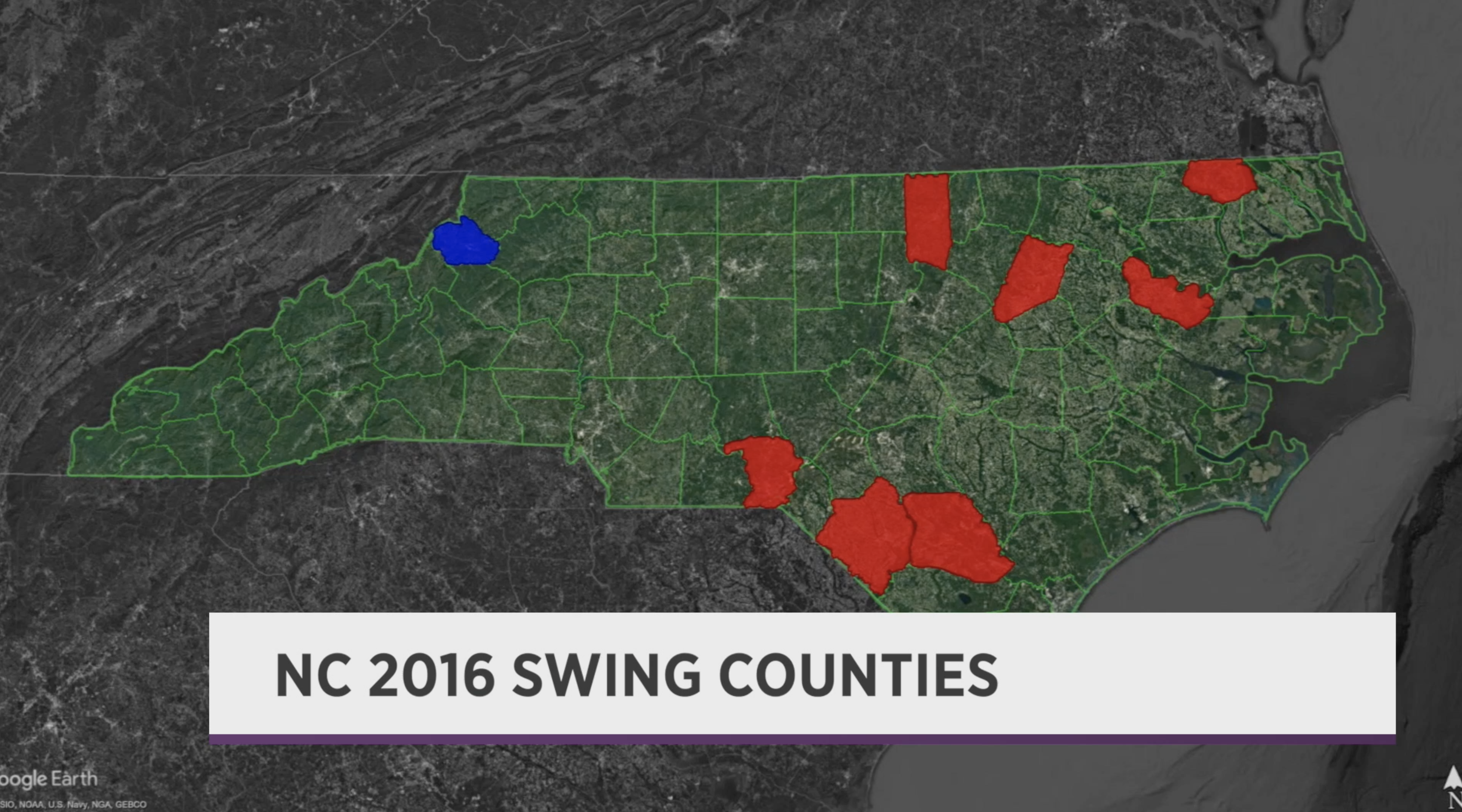North Carolina is set to be one of the key battlegrounds in the 2020 presidential election.
Across the state, a handful of counties have flipped from blue to red or vice versa in recent presidential races. They could be key communities to watch come next year.
Between 2012 and 2016, seven counties -- many of them rural -- swung from backing the Democratic ticket to backing the Republican ticket: Bladen, Gates, Granville, Martin, Nash, Richmond, and Robeson.
Only one county flipped from red to blue: Watauga.

In Nash County, Casey Davis helped put the county into the red column. He voted for Donald Trump in 2016 and says he intends to again in 2020.
“First time ever interested in voting. I never really cared before about politics or anything,” Davis said, proudly sporting a “Trump” hat while manning the griddle at the Church Street Grill in Nashville.
Nash County’s Republican Party leader wants to build on Trump’s 2016 success, saying they plan to start organizing volunteers this November -- a year ahead of Election Day.
“We are by far way in advance of where we were in 2015 preparing for the 2016 campaign,” said Mark Edwards, chair of the Nash County GOP.
Of the seven North Carolina counties that flipped in 2016, three saw the GOP ticket earn 5% more of the vote compared with 2012: Bladen, Richmond, and Gates.
In Robeson County, Trump’s GOP ticket picked up 10 percentage points over the Romney-Ryan ticket in 2012.
Phillip Stephens, the Robeson County GOP chair, says the county has struggled economically. Trump’s tough talk on trade, he says, likely struck a chord.
“These are farmers and businessmen in the community. They’re not looking for a Democrat or Republican or a conservative or liberal, they’re looking for someone who can solve their problems,” Stephens said.
In Bladen County, voters said Trump’s message resonated.
“Sometimes he says too much, but I do the same thing. He says what the American people are thinking,” said John Davis, a voter from Bladenboro.
Across the aisle, Democrats have their work cut out for them.
In Caswell County, which turned red in 2012 and stayed in the Republican column in 2016, the Democratic chairwoman said they are planning to produce philosophical radio ads aimed at making voters in the area think.
“Trump in every way has failed the American people - not just the people of Caswell. He’s failed us environmentally, he’s failing us economically, he’s failing us educationally,” Mary Susan Jesserer-Poore said.
Caswell is home to agriculture communities and Jesserer-Poore believes Democrats can also argue that the president has not kept his promises to farmers.
In Nash County, Democratic chairwoman Valerie Steel says engagement is key.
“We’re working at the grassroots. We are registering people to vote. We’re putting tremendous and specific emphasis on the younger voters -- 40 and under,” she said.
To find the one Tar Heel State county that moved from the red to the blue column in 2016, look northwest to Watauga, home of Appalachian State University. The county went blue in 2008, during Barack Obama’s first election, before turning red in 2012. Hillary Clinton carried the county in 2016.
Nathan Miller, a volunteer with the Watauga County GOP, says the county is “predominantly Republican” but the town of Boone and the university are not. “We describe it as our donut,” he said.
Miller says because of the influx of students, it could be difficult for the county to turn red again. “The problem with campus for us is the ideals that we sell, they don’t acknowledge those ideals until they go out and get a job and they see what they government is going to take from their paycheck,” he said.
So, could any of these counties flip again next year? Perhaps. Any one of them could be make or break for the candidate hoping to carry North Carolina next November.



